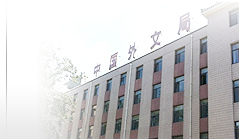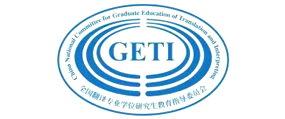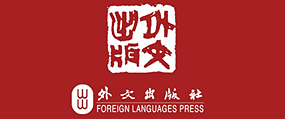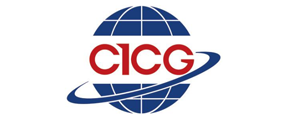一、 (大赛目的与宗旨)构建全国法律翻译竞赛平台,选拔并培养优势突出的高端法律英语人才,并以此形式来庆祝每年9月30日的世界翻译日。
二、 (大赛历史)“华政杯”全国法律翻译大赛第一届于2010年举办,至今已举办四次。第一届参赛院校32所;第二届参赛院校41所;第三届参赛院校47所;第四届参赛院校77所;影响日益扩大。本大赛正在成为全国青年法律翻译人才的选拔平台。《文汇报》、《法制日报》、《中国社会科学报》等报道了大赛。
三、 (主办与承办单位)(一)主办单位华东政法大学全国翻译专业学位(MTI)研究生教育指导委员会教育部高等学校翻译专业(BTI)教学协作组(二)承办单位华东政法大学外语学院华东政法大学法律翻译中心华东政法大学法律翻译研究所华东政法大学法律语言学研究所
四、(大赛组委会)(一)大赛顾问(按姓氏拼音排序)何勤华教授 华东政法大学校长、全国外国法制史研究会会长许 钧教授 南京大学教授、长江学者、中国译协常务副会长仲伟合教授 广东外语外贸大学校长、MTI教指委副主任委员
(二)历届颁奖嘉宾与评委名单(按姓氏拼音排序)
艾米•莎蒙丝(Amy L. Sommers)高盖茨律师事务所(K&L Gates LLP)上海办事处合伙人
柴明熲教授 上海外国语大学高级翻译学院院长
丹•格特曼(Dan Guttman) 北京大学访问学者
杜金榜 教授 广东外语外贸大学、中国法律语言学会会长
杜志淳 教授 华东政法大学党委书记
何刚强 教授 复旦大学翻译系主任、上海市科技翻译学会会长
何勤华 教授 华东政法大学校长
胡开宝 教授 上海交通大学外国语学院常务副院长
李克兴 教授 香港理工大学中文及双语系法律翻译专家
林 巍 教授 暨南大学外籍专家
刘 平 先生 上海市人民政府法制办公室副主任
刘蔚铭 教授 西北政法大学外语学院副院长
马 莉 教授 华东政法大学外语学院硕士生导师
屈文生 副教授 华东政法大学外语学院副院长
阮祝军 先生 上海市嘉定区人民检察院检察长
沙丽金 教授 中国政法大学外语学院副院长
邵慧翔 先生 上海市人民政府外事办公室副主任
夏永芳 女士 上海市外事翻译工作者协会常务副会长
肖云枢 教授 西南政法大学外语学院学科带头人
许 钧 教授 长江学者、南京大学研究生院常务副院长
许 旭 先生 中化国际(控股)股份有限公司法律部总经理
杨 平 编审 中国翻译协会副秘书长、《中国翻译》副主编
姚锦清 教授(加拿大籍) 上海外国语大学高级翻译学院
姚骏华 副教授 华东政法大学外语学院党委书记
叶 芳 女士 锦天城律师事务所合伙人余
素青 教授 华东政法大学外语学院院长
张智强 教授 华东政法大学副校长
张朱平 老师 华东政法大学外语学院副院长
章丽红 女士 前德国拜耳大中国区人力资源副总裁
赵军峰 教授 广东外语外贸大学高级翻译学院副院长
朱榄叶 教授 华东政法大学国际法学院博士生导师
五、(决赛获奖证书盖章) “华政杯”全国法律翻译大赛组委会,全国翻译专业学位研究生教育指导委员会,教育部高等学校翻译专业教学协作组
六、(参赛对象)欢迎全国各高校各专业在校本科生、硕士生及博士生踊跃参赛,比赛不限专业和年级,不分组别。已参加工作或自由职业者也可参加比赛。参赛年龄需在40周岁以下(1974年1月1日以后出生)。
七、(比赛方式)比赛分为初赛和决赛两轮。初赛试题形式为英译汉,决赛试题既有英译汉,也有汉译英。内容包括法学学术文章翻译、法律法规翻译、律师常用法律文书翻译等。
(一)初赛初赛采取开卷方式,译文文责自负,需独立完成,杜绝抄袭现象,一经发现,将取消参赛资格。初赛试题见下文,参赛选手须完成全部试题的翻译,并于2014年8月31日(含)前将答卷及《初赛选手信息表》发送到ecuplds@163.com(只接收电子信箱投稿)。译文应为WORD电子文档,中文宋体、英文Times New Roman字体,全文小四号字,1.5倍行距,文档命名格式为“XXX大学/单位XXX人名(学校名或单位名加姓名)译文”,同时寄回填写完整的初赛选手信息表,文档命名格式为“XXX(姓名)大赛报名表”。选手发送的答案须标明题号,并只发送中文。译文正文内不要出现译者任何个人信息,杜绝抄袭,否则将被视为无效译文。组委会将对收到的电子邮件回复,没有收到回复的选手请再次发送答案。收到回复的,不要重复发送答案。
(二)决赛初赛成绩排名前40名的参赛选手可进入决赛,请关注华东政法大学外语学院官方网站公布的入围名单,组委会将向进入决赛的选手的电子信箱和手机分别发出入围通知。决赛为闭卷考试,时间为2小时。入围选手凭身份证和学生证入场,统一参加笔试。决赛以纯闭卷形式进行。决赛地点设在华东政法大学长宁校区(万航渡路1575弄)。初赛及决赛参赛者均无需缴纳任何报名费用。入围考生参加复赛的交通费及住宿费等自理。比赛结束后,试卷由工作人员现场沿骑缝线装订,经大赛评委匿名评审后,确定比赛结果,并于次日举行颁奖仪式。所有获奖选手,无特殊理由,不得缺席颁奖仪式。
八、赛程安排
1、2014年4月15日— 8月31日 公布初赛试题。选手可在此期间将确定不再修正的答卷发送至指定电子信箱。8月31日零点起停止接收试卷。
2、2014年9月1日—9月4日 初赛评卷。
3、2014年9月5日 公布入围决赛选手名单(请见华东政法大学外语学院网站http://www.wyxy.ecupl.edu.cn)。
4、2014年9月12日 9:00—11:00决赛,地点设在华东政法大学长宁校区(具体教室另行公布)。
九、奖项设置 本次比赛将设特等奖1名,一等奖2名,二等奖4名,三等奖8名,优胜奖20名,分别予以奖励。特等奖设奖金3000元,一等奖设奖金2000元,二等奖设奖金1500元,三等奖设奖金800元,优胜奖设奖金500元,并颁发获奖证书。特等奖选手代表全体参赛选手在颁奖仪式上发言。决赛所有获奖选手都有机会收到担任“华东政法大学法律翻译中心特邀法律翻译人员”的邀请函,参与中心的法律翻译业务,并有机会在大赛结束后不定期参与该中心举办的法律翻译实务与学术研讨会。
十、颁奖仪式颁奖仪式将于2014年9月13日于华东政法大学长宁校区举行,届时将邀请全国法律界、翻译界、法律翻译界名家出席颁奖典礼。大赛组委会设在华东政法大学松江校区集英楼C203室。大赛事务联系人:王文老师。联系电话:021-67790148。
“华政杯”全国法律翻译大赛组委会
2014年4月15日
第五届“华政杯”全国法律翻译大赛
初赛选手信息表
| 姓名 | 专业 | ||
| 性别 | 年龄 | ||
| 学历 | (1)本科;(2)硕士;(3)博士;(4)其他 | ||
| 学校 | 学号 | ||
| 身份证号 | 手机 | ||
| 固定电话 | 邮箱 | ||
我承诺,本译文系由本人(姓名 ) 独立完成,无抄袭现象。本人同意主办方将我的参赛译文作为教学材料使用。
日期 年 月 日
第五届“华政杯”全国法律翻译大赛初赛试题
试题一 (325 words) The U.S. Supreme Court has not squarely confronted the death penalty's constitutionality since the 1970s. In that decade, the Court actually ruled both ways on the issue. In McGautha v. California, the Court first held in 1971 that a jury's imposition of the death penalty without governing standards did not violate the Fourteenth Amendment's Due Process Clause. But then in 1972, in the landmark case of Furman v. Georgia, the Court interpreted the Cruel and Unusual Punishments Clause to hold that death sentences—as then applied—were unconstitutional. In that five-to-four decision, delivered in a per curiam opinion with all nine Justices issuing separate opinions, U.S. death penalty laws were struck down as violations of the Eighth and Fourteenth Amendments. The sentences of the “capriciously selected random handful” of those sentenced to die, one of the Justices wrote, are “cruel and unusual in the same way being struck by lightning is cruel and unusual.” Other Justices also emphasized the arbitrariness of death sentences, with some focusing on the inequality and racial prejudice associated with them. Four years later, the Supreme Court reversed course yet again, approving once more the use of executions. After thirty-five states reenacted death penalty laws in the wake of Furman, the Supreme Court upheld the constitutionality of death penalty statutes in Gregg v. Georgia and two companion cases. The Court ruled that laws purporting to guide unbridled juror discretion—and requiring capital jurors to make special findings or to weigh “aggravating” versus “mitigating” circumstances—withstood constitutional scrutiny. The Court in Gregg emphasized that the Model Penal Code itself set standards for juries to use in death penalty cases. Only mandatory death sentences, the Court ruled that year, were too severe and thus unconstitutional. In its decision in Woodson v. North Carolina, the Court explicitly ruled mandatory death sentences, the norm in the Framers' era, were no longer permissible and had been “rejected” by American society “as unduly harsh and unworkably rigid.”
试题二 (348 words) The main features of the Anglo-American civil trial developed in the practice of the English common law courts in medieval and early modern times, as a consequence of the jury system, in which panels of lay persons were used to decide cases. Legal professionals—judges and lawyers—operated the initial pleading stage of the procedure, which was meant to identify and to narrow the dispute between the parties. If the dispute turned on a matter of law—that is, on a question such as whether the complaint stated a legally actionable claim, or whether some particular legal rule governed—the professional judges decided the case on the pleadings. If, however, the pleadings established that the case turned on a question of fact, the case was sent for resolution at trial by a jury composed of citizens untrained in the law. So tight was the linkage between trial and jury that there was in fact no such thing as nonjury trial at common law. In any case involving a disputed issue of fact, bench trial was unknown until the later nineteenth century. In the early days of the jury system, in the twelfth and thirteenth centuries, jurors were drawn from the close vicinity of the events giving rise to the dispute, in the expectation that the jurors would have knowledge of the events, or if not, that the jurors would be able to investigate the matter on their own in advance of the trial. Medieval jurors came to court mostly to speak rather than to listen—not to hear evidence, but to report a verdict that they had agreed upon in advance. Across the later Middle Ages, the jury ceased to function in this way for complex reasons, including cataclysmic demographic dislocations following the Black Death of the 1340s and the effects of urbanization in producing more impersonal social relations. By early modern times, jurors were no longer expected to come to court knowing the facts. The trial changed character and became an instructional proceeding to inform these lay judges about the matter they were being asked to decide.
试题三 (358 words) Among businessmen and lawyers familiar with commercial practice in complex transactions on both sides of the Atlantic, it is a common observation that a contract drafted in the United States is typically vastly more detailed than a contract originating in Germany or elsewhere on the Continent. Why are American contracts so much more detailed than European? The Belgian legal writer Georges van Hecke discussed this subject in a stimulating paper that is now a quarter-century old. He offered three explanations. 1. Perfectionism. Van Hecke attributed to the American lawyer a drive “for perfection that is not commonly to be found in Europe. The average American businessman is prepared to pay for this perfection in the form of high fees,” while his European counterpart is not. 2. Federalism. Van Hecke directed attention to the multiplicity of American jurisdictions. “An American lawyer, when drafting a contract, does not know in what jurisdiction litigation will arise. He must make a contract that will achieve its purpose in any American jurisdiction.” By contrast, the European lawyer “always has in mind the law of one country where the contract is being localized by both choice of law and choice of forum.” 3. Code law versus case law. The most intriguing of van Hecke's suggestions is that the different American style of contracting is a manifestation of that seemingly profound difference between Continental and Anglo-American legal systems: The European private law is codified whereas the American is not. Codification, especially in Germany and in the German-influenced legal systems, entailed not only a reorganization of the law, but a scientific recasting of legal concepts. “The European lawyer has at his command a store of synthetic concepts, such as 'force majeure'. Their exact meaning may not always be perfectly clear, but they do save a lot of space-consuming enumeration.” By contrast, American lawyers draft to combat “the lawless science of their law, that codeless myriad of precedent, that wilderness of single instances.” Thus, van Hecke observes, “when a European and an American lawyer want to express the same thing, an American lawyer needs far more words.” American contracts are prolix because American substantive law is primitive.
试题四 (344 words) In international law, including WTO law, it is well accepted that certain questions of a preliminary character which are independent from the merits may nonetheless stop the proceedings before findings on the merits are made. This eventuality need not be expressly stated in the governing instruments of the judicial body concerned. Questions of jurisdiction and admissibility are both part of the universe of preliminary questions that, while leaving the merits of the case untouched, have the potential to prevent or postpone a final judgment on the merits.
The difference between jurisdiction and admissibility is a feature of the general international law of adjudication. Besides the International Court of Justice, the European Court of Human Rights (ECHR) and arbitral tribunals have also made this distinction. For example, in SGS v. Philippines, the tribunal of International Center for Settlement of Investment Disputes found that it did have jurisdiction to consider a contractual claim under the so-called "umbrella clause" of the bilateral investment treaty at issue. The tribunal, however, declined to exercise this jurisdiction, concluding that the claim was not admissible because of a forum clause in the contract stating that contractual claims must be brought to domestic courts. Importantly, neither the Statute of the International Court of Justice, nor the Convention on the Settlement of Investment Disputes between States and Nationals of Other States, under which SGS v. Philippines was decided, explicitly includes the distinction between jurisdiction and admissibility. The Dispute Settlement Understanding of the WTO does not contain this distinction either, but that alone is not a reason to disregard the distinction out of hand. In fact, the dichotomy between jurisdiction and admissibility is embedded in the separation between the authority of the tribunal and the more general procedural relationship between the parties. The development of this distinction before the International Court of Justice, and its spillover to the ECHR and arbitral tribunals, indicates that there is a more general role for it in international dispute settlement. Analogously, in our view, the distinction between jurisdiction and admissibility should also be applied in WTO dispute settlement.

















